Sewer fittings: what they are for
Drainage systems cannot be assembled if sewer fittings are not used. After all, the pipes made of cast iron and plastic, used for the installation of such networks, are non-elastic, therefore they are not able to resist deformation and shock effects.
On this basis, the angular mating of pipes by the method of bending, their insertion through the holes made, joining with crimping of the diameter, is possible only when special elements are used. They are called fittings.
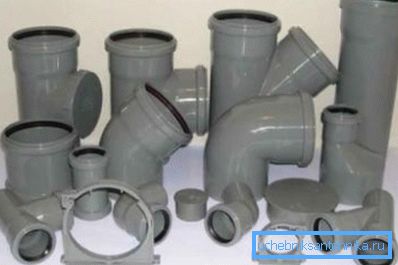
What are fittings
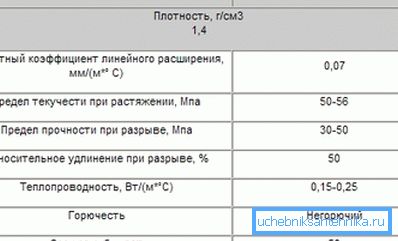
- These parts are prefabricated sewers.: compressed, bent at the required angle or reamed.
- They are combined with parts of the system using a bell joint. Details solve the problem of bending, branching or transition between the diameters of pipes.
- As a rule, modern sewer pipes and fittings are made of polyvinyl chloride, polypropylene or polyethylene..
Products from these plastics have the following qualities.
- The term of operation of a competently assembled site is about 50 years.
- Resistance to household chemicals. This plastic is not afraid of medium acids and alkalis.
- Light weight Pipes and additional parts can be fixed on the base with collapsible clamps on one or two self-tapping screws.
- High strength and low price.
- The thickness of the walls of products is equal to only 2% of their outer diameter. This gives them increased bandwidth.
Types of special items
Plastic sewer fittings fall into two categories: elements for the inside of the system and products for outdoor use.
Note! External products for systems can be used both inside and outside of buildings. Products intended for internal use should be mounted indoors only.
Exterior Sewerage Details
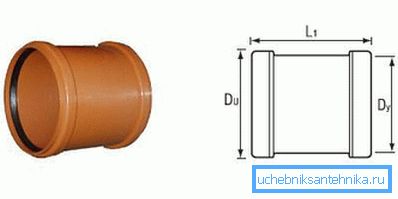
- Such products are manufactured using double extrusion technology. It gives the opportunity to produce corrugated products.
- Parts from plastic which are strengthened by special additives also belong to this category.
- Such products have resistance to low temperatures during operation.
- Plastic sewage and fittings for exterior use are terracotta or orange.
Locking, distribution and connection fittings of this type are represented by the following elements.
- Coupling for sewer systems is used to connect two sections of the pipeline. This cut has on the ends of a bell. For installation, you need to insert into them the smooth side of the pipe. Sizes of sewer fittings of this type correspond to the standard diameter range of the main products.
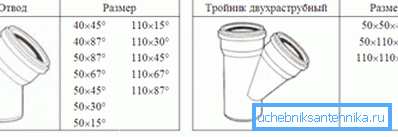
- Bend for corner joint. The product is an element bent at an angle of 90, 45, 30 and 15 degrees. Some manufacturers produce an additional model at 67 °. One side of the part has a bell, the opposite is smooth. There are also sewers with sockets at both ends.
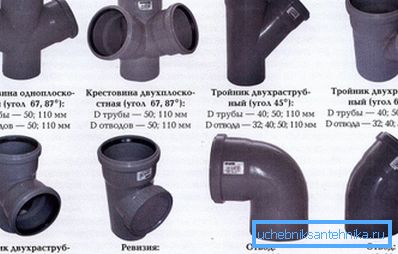
- A crosspiece for connecting the cross, as well as a tee for interfacing in the form of a letter T. The elements perform the task of tapping sections of the pipeline. Cross-shaped inset can be done both in the same and in perpendicular planes.
- There are special fittings that have a complicated profile. They make it possible to match the pipes according to the original scheme. The ends of tees and crosses have the appearance of a bell or are made smooth.

- Reduction is needed to connect pipes of different sections with your own hands. This element is similar to the clutch, but its sides have different diameters.
- Inspection in the form of a coupling or tee with a lid. This fitting is used to determine the condition of the pipes. You can remove the cover, check the system and clean it, if necessary.
- A check valve is needed to regulate the direction of flow of wastewater. The element passes it only in one of the parties and prevents the return of fluid.
The diameter of the external fittings varies from 90 mm to 500.
Analogs for the inside of the system
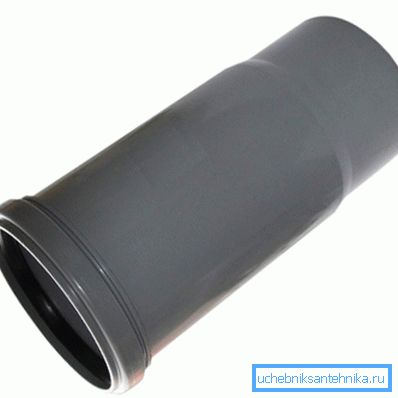
- Dimensions of sewage pipes and fittings for indoor installation are limited. These are 40, 50 mm or 110. These products have gray color.
Note! From external analogues, these elements are less resistant to temperature effects. The mode of operation from 0 ° to + 45 °. Another difference is that such fittings have monolithic walls of equal thickness.
- The products do not contain fiber reinforcement, their profiles are not corrugated. This lowers its resistance to external influences. The instruction warns that it is impossible to bury them in the soil.
- The elements for the internal part of the network are almost the same as the external ones. Among the products are all the same couplings, revisions, bends and reductions.
The original product for domestic sewage networks is just a compensating connection. This fitting is similar to a conventional coupling, but on one side it does not have a socket, but a smooth tapered section of the pipe.
The element serves to fit the vertical pipes of the sewer riser to the height of the ceiling of the room. The length of the internal pipes is 2 or 3 m, the height of the rooms can be 2.2, 2.5, 2.8 and 3.2 m. So as not to cut pieces of 20/40 centimeters from whole 2/3 meter products and compensatory pipes are used.
Conclusion
Fittings provide an opportunity for competent and quick installation of sewer systems. They greatly simplify the work of specialists. The video in this article contains a lot of interesting information.